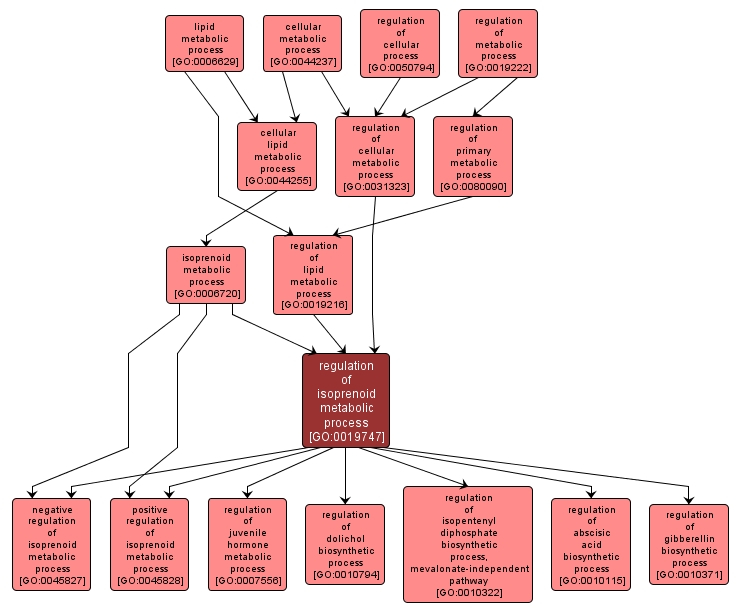GO TERM SUMMARY
|
| Name: |
regulation of isoprenoid metabolic process |
| Acc: |
GO:0019747 |
| Aspect: |
Biological Process |
| Desc: |
Any process that modulates the frequency, rate or extent of the chemical reactions and pathways involving isoprenoids. |
Synonyms:
- regulation of isoprenoid metabolism
|
|

|
INTERACTIVE GO GRAPH
|














